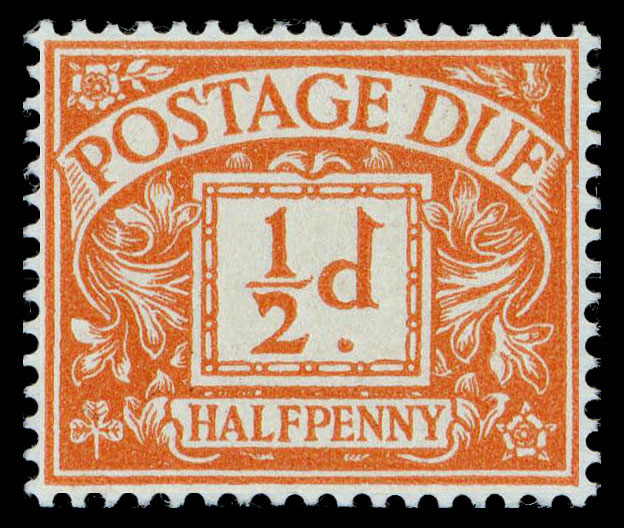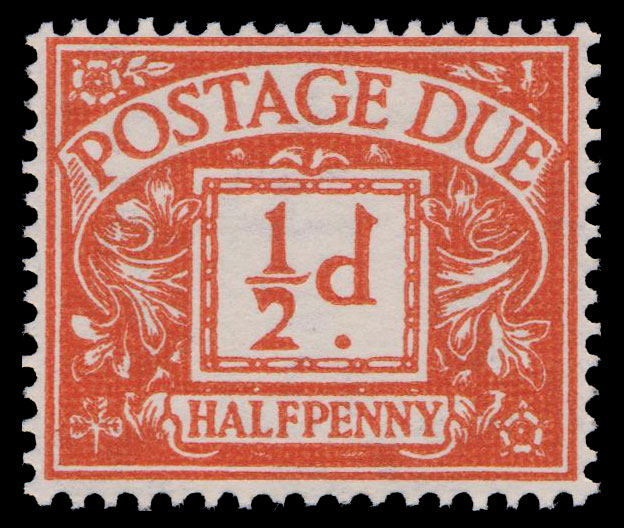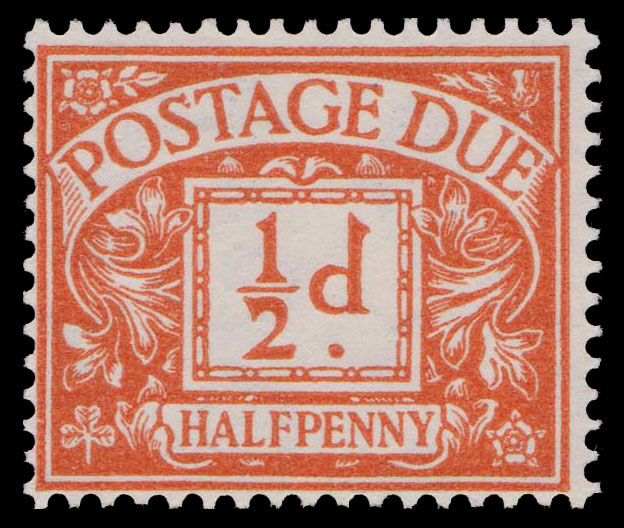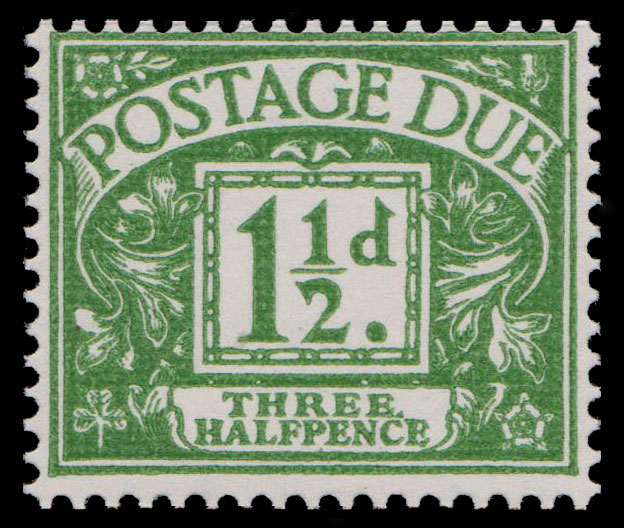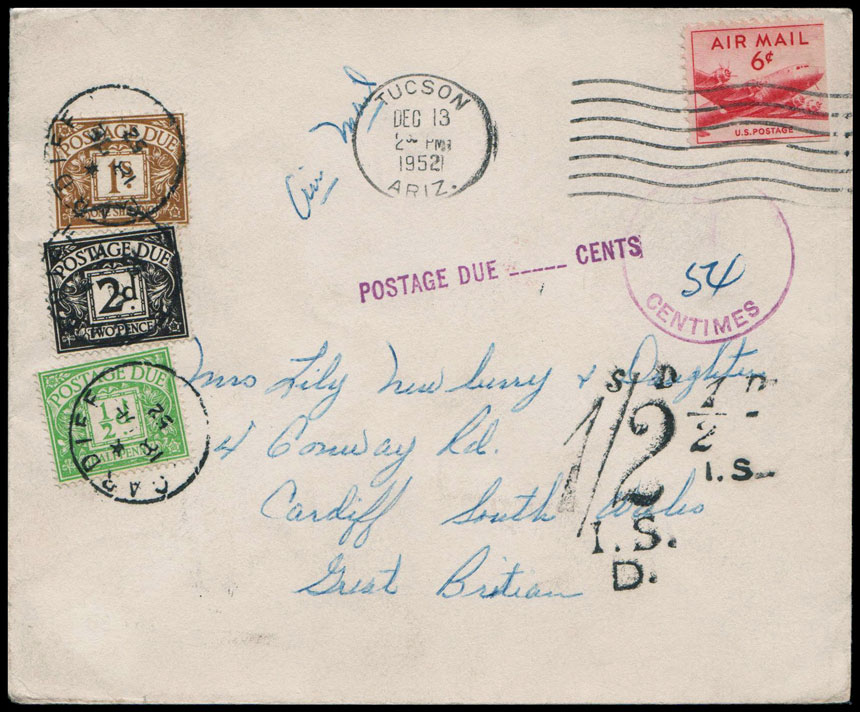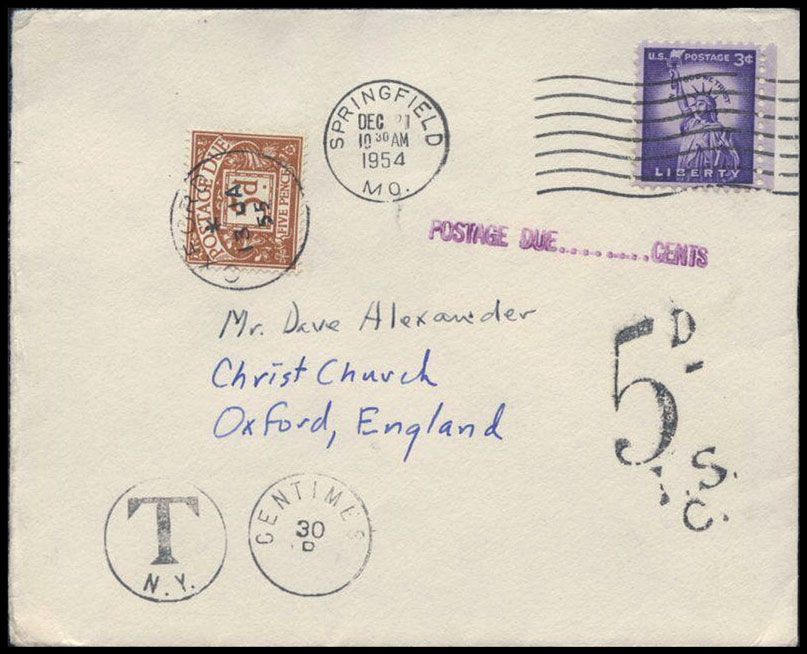
A change of colour in the Postage Dues followed the same change in postage stamps (to meet the colour regulations of the UPU). The new postage stamps were issued to coincide with the Festival of Britain on 3 May 1951, but the dues came later, the first on 6 June 1951. The 2d, 3d, 5d, and 2/6 continued unchanged.
The increase of the printed paper rate on 1 June 1951 to 1½d revived the need for a Postage Due label of this denomination for the return-to-sender rate. This value had last been issued in 1924. However, the new 1½d label was not issued until 11 Feb 1952.
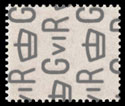
Sideways
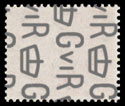
Sideways-inverted
Watermarks shown as seen from the front of the stamp.
| ½d | Yellow-orange | 18 Sept 1951 |
| Bright Orange | May 1954 | |
| 1d | Violet-blue | 6 June 1951 |
| 1½d | Green | 11 Feb 1952 |
| 4d | Blue | 14 Aug 1951 |
| 1s | Ochre | 6 Dec 1951 |
All except the ½d are known sideways-inverted.
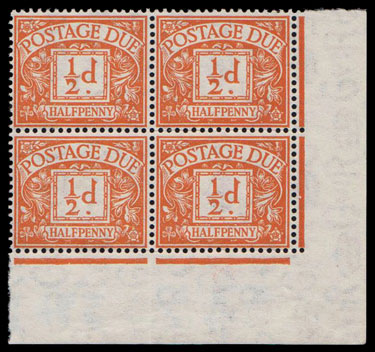
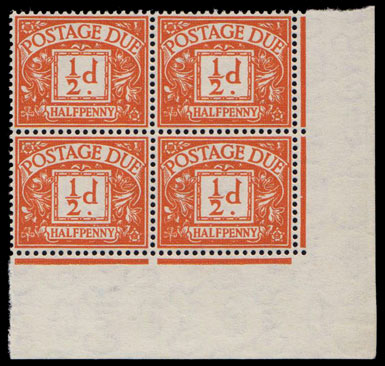
Matching blocks of Yellow-orange and Bright Orange.
There is a story that two sheets of Bright Orange with GviR watermark were found in with the first Tudor watermark issue of 1955, implying that Bright Orange was meant for the Tudor issue, and the GviR sheets were an error of watermark. While the first part of the story may be correct, the conclusion is not. Although the date of issue of this colour was not announced, it was reported used in Torquay in May 1954, well before the Tudor printing.
Overprints
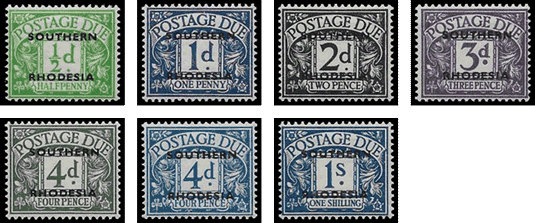
Issued 1 Oct 1951, before all of the new colours were available, the Southern Rhodesia “set” was a mixture of original and new colours. The 4d label was issued in both colours but most 4d dull grey-green were quickly withdrawn making it a difficult stamp.
Varieties
Click the images to enlarge.
S&T Joined occurs at row 1/20.
Broken “2” in “½” occurs at row 3/14, 7/13, 9/9.
Rounded “2” in “½” occurs at row 9/13.
Stop after “THREE” occurs in several positions, mainly row 1.
The 1d is known bisected at: Camberley (1954); Dorking (1952).
Provisional Issues
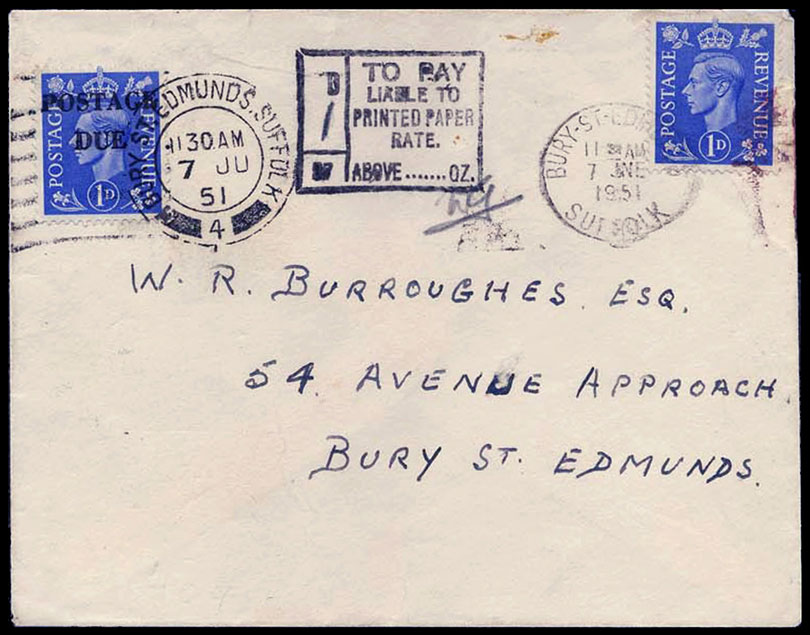
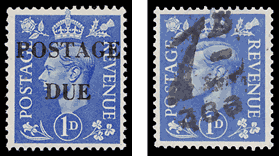
The printed paper rate increased on 1 June 1951 causing a large number of underpaid items. On 7 June, the Post Office at Bury St. Edmunds ran out of 1d Postage Dues and made two handstamps (one “POSTAGE” and one “DUE”) to overprint a half-sheet of 1d postage stamps. About 100 were used and 20 unused examples were bought at face value by a local philatelist who sold them to Wingfield’s in the Strand.
The Post Office at Herne Bay used 1d postage stamps with the local surcharge handstamp “1d 366”.
Other offices bisected the 2d Agate: Boreham Wood; Camberley; Harpenden; St Albans.
Covers
Click the images to enlarge.
Underpaid airmail from the USA, mix of 1s Ochre and original colours.
